Installing lag bolts is an important part of many construction projects. Lag bolts, also known as lag screws, are large screws that are used to attach heavy objects to wood, such as beams or posts. They are also commonly used in deck building, as well as in other outdoor construction projects. In this article, I will provide a step-by-step guide on how to install lag bolts, as well as some tips on how to choose the right lag bolt for your project.
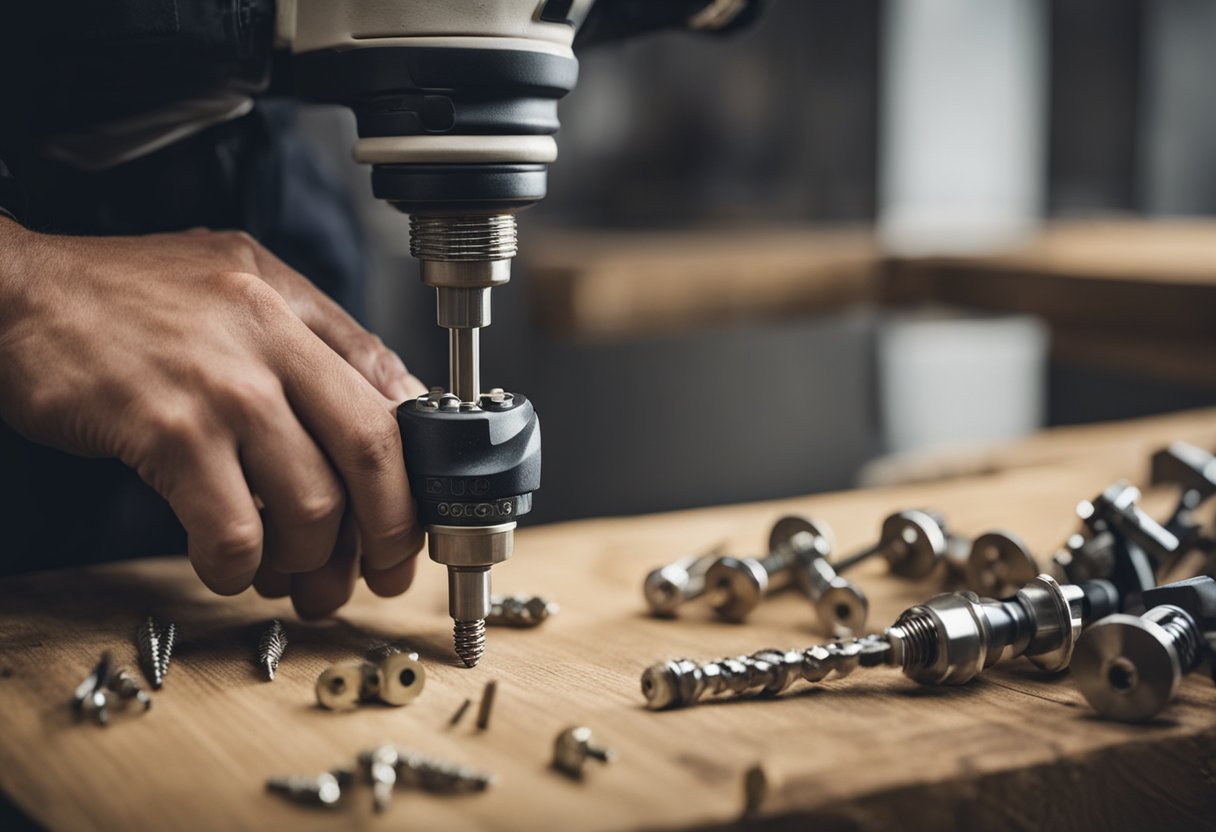
Before you begin installing lag bolts, it is important to understand what they are and how they work. Lag bolts are typically much larger than other types of screws, and they have a hexagonal head that can be tightened with a wrench or socket. They are designed to be used in wood, and they are often used to attach heavy objects to wooden structures.
Choosing the right size and type of lag bolt is critical to the success of your project. The size of the lag bolt you need will depend on the weight of the object you are attaching and the type of wood you are using. You should also consider the length of the lag bolt, as it should be long enough to penetrate both pieces of wood without protruding out the other side. Additionally, you should consider the type of coating on the lag bolt, as this can affect its durability and resistance to corrosion.
Key Takeaways on How to Install Lag Bolts
- Understanding what lag bolts are and how they work is essential when installing them.
- Choosing the right size and type of lag bolt is critical to the success of your project.
- Proper preparation, including drilling a pilot hole and securing heavy loads, is necessary for a successful installation.
Understanding Lag Bolts
As a handyman, I have found that lag bolts are an essential tool for many construction projects. Lag bolts are a type of fastener that is commonly used for load-bearing applications. They are designed to provide a secure and tight connection between two pieces of wood or metal.
Lag bolts come in various sizes and shapes, including hex head and square head. The hex head lag bolts are the most common type of lag bolt and are easy to install using a socket wrench. Square head lag bolts are less common but are ideal for use in rustic or traditional construction projects.
One of the key features of lag bolts is their coarse threads. Coarse threads provide a strong and secure grip, making them ideal for load-bearing applications. The load-bearing capacity of a lag bolt depends on its size and the material it is made of.
Lag bolts are designed to handle heavy loads and have a high load-bearing capacity. They are commonly used in construction projects to secure beams, joists, and other load-bearing structures.
In summary, lag bolts are an essential tool for load-bearing applications. They come in various sizes and shapes, including hex head and square head. The coarse threads provide a secure grip, making them ideal for heavy loads. When selecting a lag bolt, it is important to consider the load-bearing capacity and the material it is made of.
Choosing the Right Lag Bolt
When it comes to installing lag bolts, choosing the right size and material is crucial to ensure a secure and long-lasting installation. Here are some factors to consider when selecting the appropriate lag bolt:
Size and Diameter
The size and diameter of the lag bolt should be determined by the thickness and weight of the materials being fastened. As a general rule, the lag bolt should be 1/4 inch shorter than the combined thickness of the materials. For heavy-duty applications, larger diameter lag bolts such as 5/16”, 1/2”, or 5/8” may be necessary.
Material
Lag bolts are available in a variety of materials including steel, stainless steel, and galvanized steel. For outdoor applications or areas with high moisture content, galvanized or stainless steel is recommended to prevent rust and corrosion.
Wood or Concrete
The type of material being fastened will determine the type of lag bolt needed. For wood applications, a wood lag bolt with a coarse thread is recommended to provide maximum holding power. For concrete or masonry, a concrete lag bolt with a flat head and a special coating to prevent rust is recommended.
Heavy Materials
For heavy materials such as beams or large pieces of lumber, it is important to use a lag bolt with a longer shank and larger diameter to ensure a secure installation.
By considering the size, diameter, material, and type of material being fastened, you can choose the right lag bolt for your specific application.
Required Tools and Materials
Before you begin installing lag bolts, it is important to gather all the necessary tools and materials. Here are the items you will need:
Tools
- Drill: You will need a power drill to make the holes for the lag bolts. Make sure the drill has enough power to handle the size of the bit you will be using.
- Drill Bit: Choose a drill bit that is the same size as the shank of the lag bolt you will be using. This will ensure a tight fit and prevent the bolt from wobbling.
- Wrench or Ratchet: You will need a wrench or ratchet to tighten the nut onto the lag bolt. Make sure the wrench or ratchet fits the size of the nut you will be using.
- Clamps: Clamps will help hold the materials together while you drill the holes and install the lag bolts. Use as many clamps as necessary to ensure a secure hold.
Materials
- Lag Bolts: Choose lag bolts that are the appropriate size and length for your project. The rule of thumb is that the lag bolt should be 1/4-inch shorter than the accumulated width of the two pieces being fastened.
- Washers: Use washers to distribute the load of the bolt and prevent damage to the materials being fastened.
- Nuts: Use nuts to secure the lag bolt in place. Make sure the nut fits the size of the bolt you will be using.
By gathering all the necessary tools and materials beforehand, you can ensure a smooth and efficient installation process.
Preparing for Installation
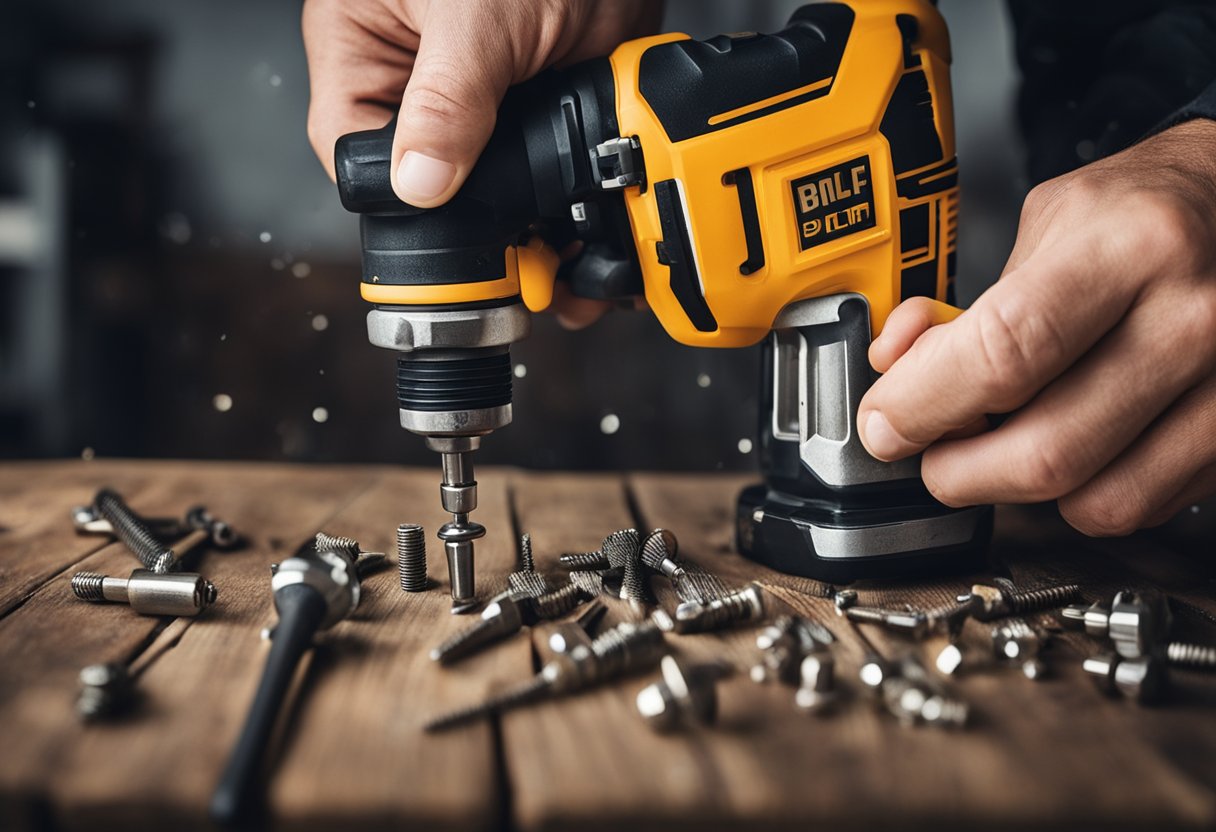
Before installing lag bolts, it is important to prepare the materials and tools needed for the job. Here are the steps I take to ensure a successful installation:
-
Measure the lumber: It is important to measure the thickness of the lumber to ensure the correct size of the lag bolt is used. The rule of thumb is that the lag bolt should be 1/4-inch shorter than the accumulated width of the two pieces being fastened. This ensures that the bolt will not protrude out of the other side.
-
Inspect the lumber: Check the lumber for any defects or damage that may affect the structural integrity of the project. If any defects are found, replace the lumber before proceeding with the installation.
-
Prepare the beams: If installing lag bolts for beams, make sure they are flush and level before drilling the holes. This will ensure that the beams are securely fastened and will not shift or move over time.
-
Mark the location: Use a pencil or marker to mark the location where the lag bolt will be installed. This will help ensure that the bolt is installed in the correct location and at the correct depth.
-
Drill a countersink hole: Use a drill bit that is slightly larger than the diameter of the lag bolt to drill a countersink hole. This will allow the head of the bolt to sit flush with the surface of the lumber.
-
Drill the pilot hole: Use a drill bit that is slightly smaller than the diameter of the lag bolt to drill the pilot hole. Make sure the hole is drilled to the correct depth to ensure a secure fit.
By following these steps, you can ensure that your lag bolts are installed correctly and securely.
Drilling the Pilot Hole
As I prepare to install lag bolts, the first step I take is to drill a pilot hole. A pilot hole is a small hole drilled into the wood to guide the lag bolt and prevent it from splitting the wood. The size of the pilot hole is determined by the size of the lag bolt.
To drill the pilot hole, I use a power drill fitted with a drill bit that matches the diameter of the lag bolt. For example, if I am using a 3/8-inch diameter lag bolt, I will use a 15/64-inch diameter bit to drill the pilot hole. It is important to use the correct size bit to ensure a snug fit between the bolt and the wood.
When drilling the pilot hole, I make sure to hold the drill steady and apply even pressure. I also make sure to drill the hole straight, perpendicular to the surface of the wood. This ensures that the bolt will be properly aligned and secure.
If I am working with softwood, I use a slightly smaller bit than the bolt diameter to prevent splitting. For example, if I am using a 3/8-inch diameter bolt, I would use a 5/16-inch diameter bit for softwood. On the other hand, if I am working with hardwood, I use a slightly larger bit to ensure a snug fit. For example, if I am using a 3/8-inch diameter bolt, I would use a 13/32-inch diameter bit for hardwood.
In summary, drilling the pilot hole is an essential step in installing lag bolts. By using the correct size bit and drilling straight and steady, I can ensure a secure and long-lasting installation.
Installing the Lag Bolt
When it comes to installing lag bolts, there are a few key steps to keep in mind. First, you’ll need to gather the necessary tools and materials, including the lag bolt itself, a drill, and a socket or ratchet. Depending on the type of lag bolt you’re using, you may also need a washer or other hardware.
Once you have everything you need, it’s time to get started. Begin by drilling a pilot hole into the material you’re attaching the lag bolt to. The size of the hole will depend on the size of the bolt, so be sure to check the manufacturer’s recommendations.
Next, insert the lag bolt into the hole and use your socket or ratchet to tighten it down. Be careful not to overtighten the bolt, as this can cause damage to the surrounding material.
If you’re installing a structural lag bolt, which is designed to support heavy loads, you’ll want to take extra care to ensure that it’s installed correctly. These bolts typically require a larger pilot hole and may need to be torqued to a specific level to ensure proper installation.
Overall, installing lag bolts is a straightforward process that can be completed with just a few tools and some basic know-how. Whether you’re attaching a piece of furniture or securing a load-bearing beam, lag bolts are a reliable and effective fastener that can get the job done.
Securing Heavy Loads and Structures
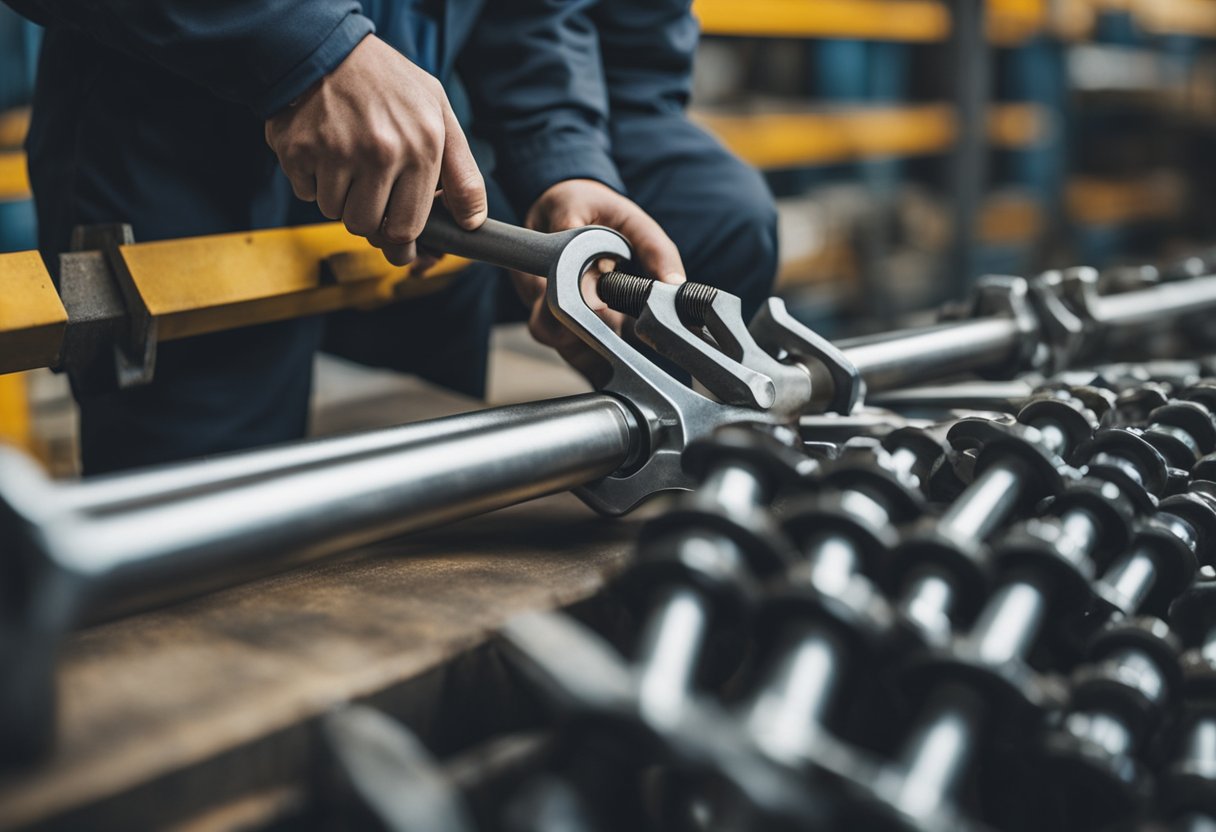
When installing lag bolts for heavy loads and structures, it is important to consider load-bearing capacity and structural integrity. This is especially important when installing lag bolts for decks and decking, roof beams, and deck ledgers.
Before starting the installation process, it is important to check the local building code, such as the International Residential Code (IRC), to ensure that the installation meets the required standards. This will ensure that the structure is safe and secure.
When selecting lag bolts, it is important to choose bolts that are strong enough to support the load. The size and length of the lag bolt should be appropriate for the job. It is recommended to choose bolts that are at least 1/4-inch shorter than the accumulated width of the two pieces being fastened.
To ensure maximum strength, it is recommended to use a washer with the lag bolt. The washer will distribute the load evenly and prevent the bolt from pulling through the wood. It is also recommended to pre-drill a hole for the lag bolt to prevent splitting and ensure a tight fit.
When installing lag bolts for heavy loads and structures, it is important to tighten the bolt firmly to ensure that it is secure. However, over-tightening the bolt can damage the wood and reduce its load-bearing capacity. It is recommended to use a torque wrench to ensure that the bolt is tightened to the appropriate level.
By following these guidelines, you can ensure that your lag bolts are installed safely and securely, providing the necessary strength and support for your heavy loads and structures.
Caring for and Maintaining Lag Bolts
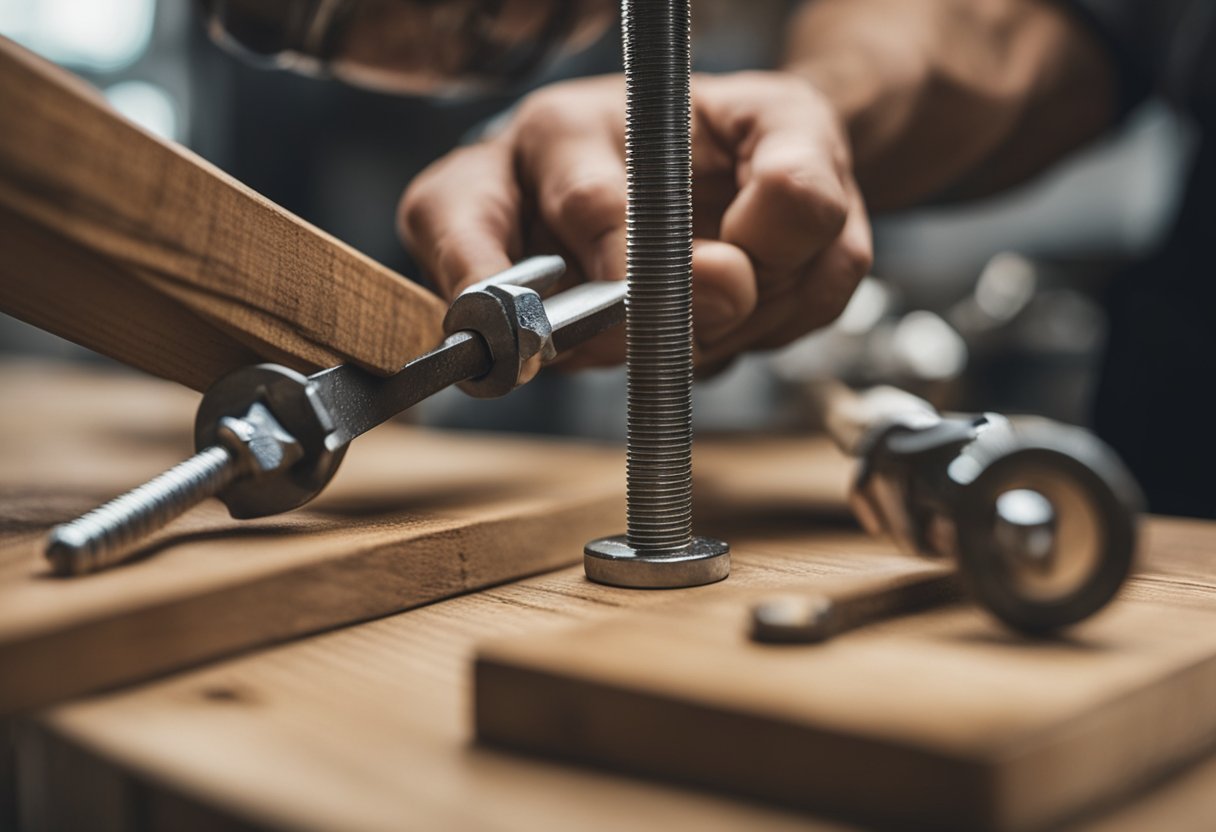
As a handyman, I know that maintaining and caring for your tools is essential in ensuring they last long and perform optimally. Lag bolts are no exception. Here are some tips on how to care for and maintain your lag bolts.
Finish
Lag bolts come in different finishes such as plain, zinc-plated, galvanized, and stainless steel. The finish affects the bolt’s durability and resistance to corrosion. Zinc-plated bolts are prone to rust and require regular cleaning to maintain their finish. Galvanized and stainless steel bolts are more resistant to rust and can handle harsh outdoor conditions.
Material
The material your lag bolts are made of also affects their durability. Steel bolts are stronger and more durable than brass or aluminum bolts. However, steel bolts are prone to rust and require regular cleaning and maintenance.
Cleaning
To clean your lag bolts, use a wire brush or a metal polish to remove rust and dirt. You can also use a rust converter to convert rust into a stable compound that prevents further rusting. After cleaning, apply a lubricant such as WD-40 to prevent rust and make it easier to drive the bolts.
Storage
Proper storage is essential in maintaining the quality of your lag bolts. Store them in a dry place away from moisture and humidity. You can also use a rust inhibitor to prevent rusting during storage.
By following these tips, you can ensure that your lag bolts last long and perform optimally.
Frequently Asked Questions
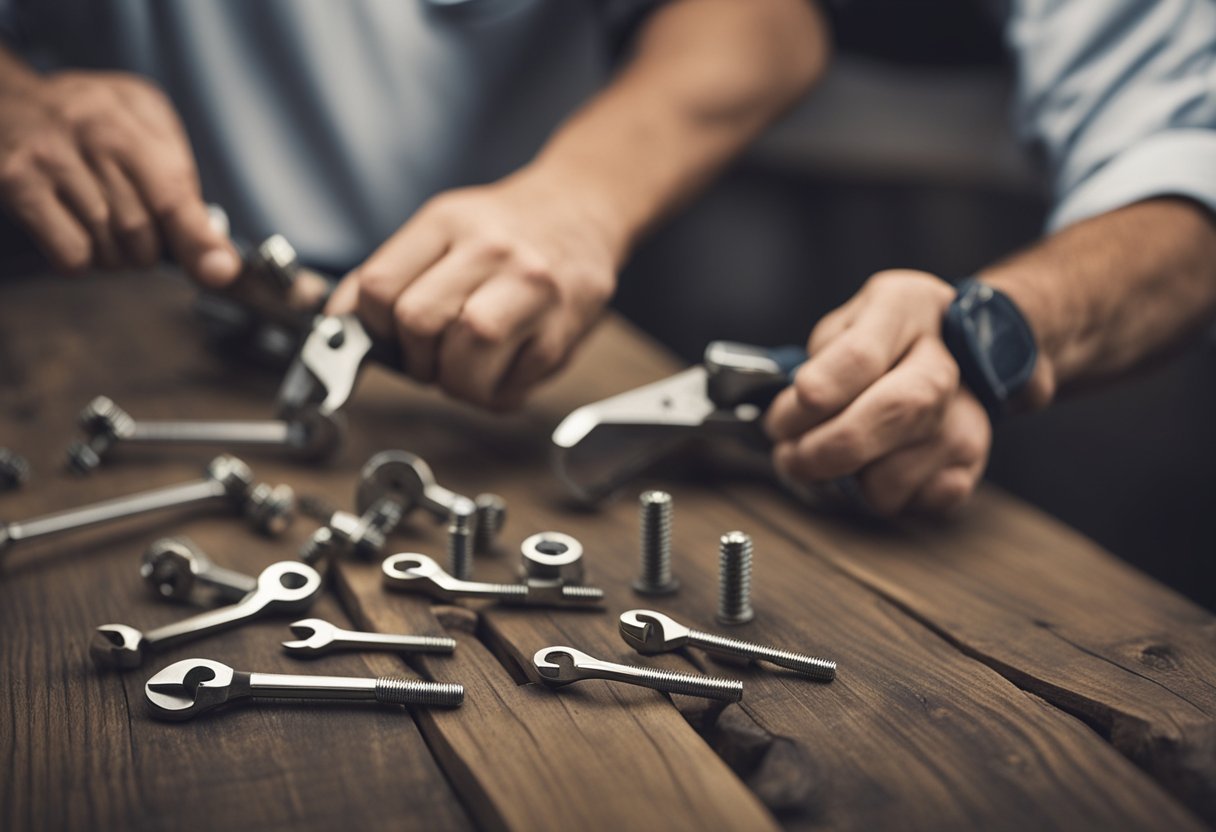
What size pilot hole should be used for a 3/8 lag bolt in wood?
For a 3/8 lag bolt in wood, a pilot hole should be drilled with a diameter of 5/16 inches. This will allow for the threads of the lag bolt to grip the wood and prevent splitting.
Do you need to pre-drill before installing lag bolts?
Yes, it is recommended to pre-drill before installing lag bolts. This will help prevent the wood from splitting and ensure that the lag bolt is properly secured.
Should lag bolts go all the way through the wood?
It depends on the application. In some cases, it may be necessary for the lag bolt to go all the way through the wood. However, in most cases, the lag bolt should only be driven partially into the wood to ensure a secure hold.
What are the different types of lag bolts available?
There are several types of lag bolts available, including hex head, round head, and flat head. Hex head lag bolts are the most common type and are used for a variety of applications.
Do I need to use washers with lag bolts?
It is recommended to use washers with lag bolts. This will help distribute the load and prevent damage to the wood.
What is the recommended lag bolt size for a TV mount installation?
The recommended lag bolt size for a TV mount installation will depend on the weight of the TV and the type of wall the mount is being installed on. It is recommended to consult the manufacturer’s instructions or a professional for guidance on the appropriate size of lag bolt to use.

Hi, I’m Sal Muller of Tooltrip.com. My DIY experience led me to understand essential power tools for home projects. Tooltrip.com guides enthusiasts and professionals in choosing right tools for any job. I provide concise top tool reviews for easier, efficient DIY.

